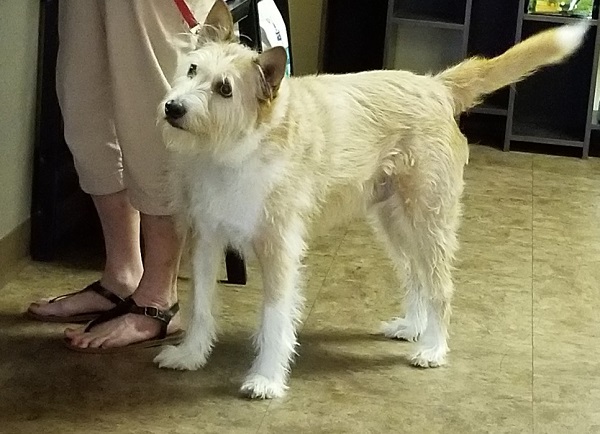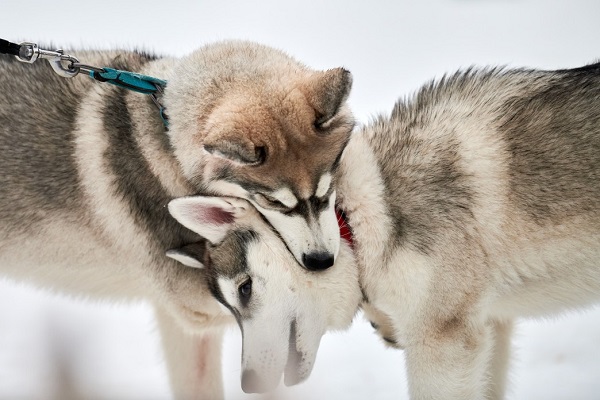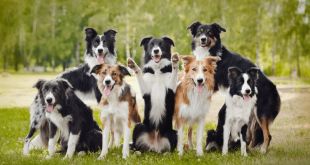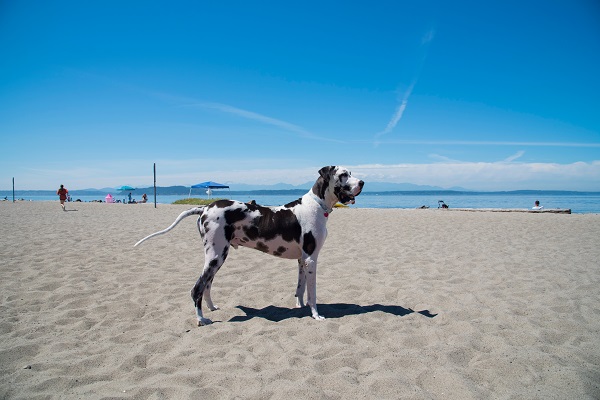Do you know that furry companion can also talk? What is your dog trying to say? They may not be able to say a word. However, but can communicate their emotion and feelings through their body movement.
Let us discuss how we can interpret their body language to understand their feelings.
Key Features
- Decoding their body language is the main feature. It will help in communicating with your furry friends.
- They communicate through various postures, facial expressions, and other types of movement.
- Responsible owners must try to understand their body language.
- Dog’s communication consists of various movement intentions and emotions though it’s far different from how humans communicate. It consists of barking, growls, and whining. All of these signs need to be understood. Lots of misunderstandings occur between humans and dogs due to nonverbal communication.
Some of the tips for better communication with the dog are below.
Dog Body Language Guide
1. Tail Wagging
Tail wagging is an expression of their body language. Not every tail wagging means happiness. Hence, it means the dog is aroused emotionally. Maybe they are frustrated; even the condition can be worse than that. To comprehend that situation, notice the direction, position, and wagging speed.
The higher the speed more emotionally aroused they are. Long and slow side-by-side wagging with whole-body movement is an indication of welcome and indicates the mood is relaxed. A faster convulse may indicate their hidden anxiety; maybe it’s a negative gesture like a guard dog on the alert. Direction is a significant factor. If they wag more towards the right, it indicates a welcome.
It is evident in the time of interaction with the owner. The left-way wagging is indicative of something negative. Circular movement usually means happiness. Dogs often do this when they are happy, especially while meeting with their favorite person. The position of the tail concerning the body indicates the emotional status.
It is interesting to note this- the higher the tail, the higher the positive attitude of your dog. If the tail is down between the legs, it indicates their anxiety and fear. If a dog holds their tail like a flag, it is a sign of aggression. Depending upon the breed of dog, holding their tail in the neutral position indicates their relaxed state. By understanding your dog’s neutral position, you can interpret their emotional reflex according to the position change.
Read Also: Canine Behavioral Problems: Correcting Bad Behavior
2. Raised Hackles
In the time of raised hackle, it means a situation where the hair in the back is raised, which is called piloerection. In such a situation, their hair becomes fluff from the neck going down to back till the tail. That indicates the dogs are emotionally aroused but maybe in a negative way.
They may be stressed and disturbed but could be exhilarated and interested in something. Often, it’s the reflexive reaction, like creeps in people.
3. Posture
Weight distribution can be an indication of intention and mood. Crouching dogs bent towards the ground is an indication of fear or anxiety. Maybe it’s trying to minimize the size of their appearance to escape from the situation. The extreme condition of this situation is rolling down to the ground exposing the belly upwards, which may look like a belly rub and relaxed mood.
Often this is true. In reality, it’s a symptom of anxiety and stress. They may even urinate in a little reconciliation. When their weight gets shifted forward, that might indicate interest. Sometimes, it may be a symptom of an offensive attitude if it consists of aggressive body language with a twitching tail held high. They try to increase their size to appear bigger. A simple move understood is the play bow.
It is apparent when the dogs place their chest on the ground and hold their back high. It indicates their playful mood with another animal or human. A less stable situation is paw raising. It is part of point behavior indicating the presence of the prey in the area. In another way, it can be a gesture of the uncertainty of the situation or a feeling of insecurity.
4. Facial Expressions
Though dogs have similar facial features to humans, they don’t similarly use them. For example, humans yawn when tired. However, in the case of dogs, it does so when it’s stressed. Lip licking is another indication misunderstood by a human. Usually, they lick after delicious food, but maybe it’s a sign of anxiety.
Smiling is mist confusing symptom. Dogs also smile. But, we are unfamiliar with the situation. People interpret it as a tarrying situation. There is an aggressive posture of the snarl when associated with menacing growl shape corner lips and a full display of front teeth.
5. Eyes
Observation of the eye gives you an understanding of the internal state of a dog. Soft eyes are relaxed and sometimes blinking. It indicates peace and happiness. The opposite is hard eyes that appear cold and rough. You can understand the negative vibes by looking at it.
A hard stare is the indication of a threat. Eye contact is crucial in the case of dogs. When the dog looks away from eye contact, it means it wants to avoid the situation. When a dog shows the white part of the eye, he is anxious.
6. Deciphering Dog Body Language
All signals happen in packages, not individually. Understand every sign starting from the height of the tail to eye contact. Then you communicate with them, which increases the bond between you and your dog.

 DogExpress
DogExpress























 in Chandigarh, India.
in Chandigarh, India. 
